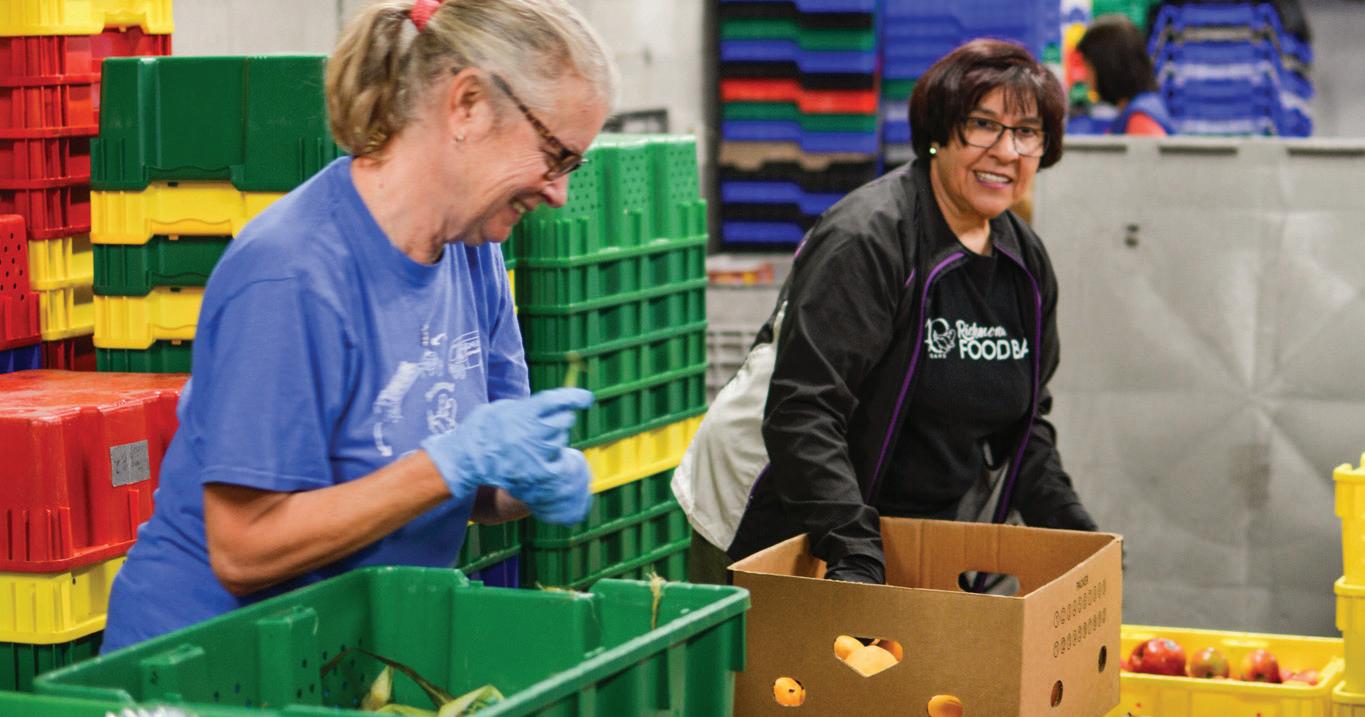






















By Iglika Ivanova and Anastasia

Working for a Living Wage: Making paid work meet basic needs in Metro Vancouver
























By Iglika Ivanova and Anastasia

Working for a Living Wage: Making paid work meet basic needs in Metro Vancouver
BY IGLIKA IVANOVA AND ANASTASIA FRENCH
Iglika Ivanova is a senior economist and Public Interest Researcher at the CCPA–BC. She is also a Co-Director of the Understanding Precarity in BC (UP-BC) project, a research and public engagement initiative investigating precarious work and multi-dimensional precarity in British Columbia.
Anastasia French is the Provincial Manager of Living Wage BC.
ACKNOWLEDGEMENTS
The authors would like to thank our community partners across the province for their participation in the annual community calculation process, for their insightful feedback on the calculation methodology and for always pushing us to refine the living wage calculation to better capture the realities of low-wage workers. Thanks also to Tania Oliveira for her research support and to our fantastic publication team at CCPA–BC for helping make this report more accessible and for ensuring that it has a wide reach.
The opinions and recommendations in this report, and any errors, are those of the authors and do not necessarily reflect the views of the publishers and the funders of this report.
PUBLISHING TEAM
Jean Kavanagh, Kevin Millsip, Marianela Ramos Capelo
Layout: Susan Purtell
This report is available under limited copyright protection. You may download, distribute, photocopy, cite or excerpt this document provided it is properly and fully credited and not used for commercial purposes.

520 – 700 West Pender Street Vancouver, BC V6C 1G8 604.801.5121 | ccpabc@policyalternatives.ca policyalternatives.ca
The CCPA–BC is located on unceded Coast Salish territories, specifically the lands belonging to the xwməθkwəýəm (Musqueam), Skwxwú7mesh (Squamish) and səÍílwətaʔɬ /Selilwitulh (Tsleil-Waututh) Nations.
The hourly rate that each of two parents working full-time must earn to support a family of four. With a living wage that reflects the actual cost of living in a particular community, workers are able to afford the necessities, support the healthy development of their children, escape severe financial stress and participate in the social, civic and cultural lives of their communities.
For Metro Vancouver, the 2024 living wage is $27.05

The 2024 living wage for Metro Vancouver is $27.05 per hour. This is the hourly rate that each of two parents working full-time must earn to support a family of four in Metro Vancouver. The living wage is enough for a family with two young children to cover the necessities, support the healthy development of their children, escape severe financial stress and participate in the social, civic and cultural lives of their communities. It affords a decent if still very modest standard of living without the extras many of us take for granted.
Although inflation has come down from the historic highs recorded in 2022, the cost of living— and particularly housing—in Metro Vancouver continues to increase rapidly, intensifying the affordability crisis. Government initiatives to help households absorb some of the cost increases, such as ongoing child care affordability improvements, the gradual roll-out of the new Canadian Dental Care Plan and increases to key income-tested BC government benefits have helped to remove pressure from stretched family budgets. However, the savings are entirely consumed by soaring prices, especially for food and shelter, which continue to rise faster than general inflation.
As a result, the 2024 Metro Vancouver living wage is $27.05 per hour—up $1.37 from the 2023 living wage of $25.68 per hour or 5.3% higher.
A strikingly large gap exists between the 2024 Metro Vancouver living wage and BC’s current minimum wage of $17.40 per hour. Nearly half a million workers in Metro Vancouver earn less than the living wage or 37% of all paid employees in the region.1 One third (31%) of two-parent families with children in Metro Vancouver have a total family income below the living wage family income and struggle to make ends meet.2 Many are pushed out into Metro Vancouver’s farther suburbs or out of the region entirely.3
1 Ivanova, Iglika. Trapped in the Wage Gap: Who Earns Less Than The Living Wage in BC? Vancouver: Canadian Centre for Policy Alternatives, BC Office, 2024. https://policyalternatives.ca/gap
2 Data from Statistics Canada. Table 11-10-0013-01. “Census families by total income, family type and number of children.” 2024. https://www150.statcan.gc.ca/t1/tbl1/en/tv.action?pid=1110001301
3 See, for example, Cheung, Christopher. “Where Did Vancouver’s Children Go.” The Tyee. April 29, 2022. https://thetyee.ca/Analysis/2022/04/29/Where-Did-Vancouver-Children-Go/
Sources: Working for a Living Wage: Making paid work meet basic family needs in Metro Vancouver reports, 2008 to 2023.
People who work for low wages face impossible choices—buy groceries or heat the house, keep up with bills or pay the rent on time. The result can be spiraling debt, constant anxiety and long-term health problems. In many cases it means working long hours, often at multiple jobs, just to pay for basic necessities.4 Parents end up having little time to spend with their families, much less to help their children with school work or participate in community activities and we are all poorer for it.
For low-wage workers, earning a living wage is a game changer. With a living wage that reflects the actual cost of living in a particular community, workers are able to afford the necessities, support the healthy development of their children, escape severe financial stress and participate in the social, civic and cultural lives of their communities.
The living wage is a powerful tool to ensure paid work results in a decent standard of living and enables a life that is about more than a constant struggle to get by.
The living wage is not the same as the minimum wage, which is the legal minimum all employers must pay and often does not reflect the true expenses people face. The living wage has always been higher than the minimum wage but the gap narrowed considerably between 2018 and
4 In a BC-wide survey conducted in late 2019, 29% of workers aged 25 to 65 reported having worked multiple jobs at the same time in the last three months. See Ivanova et al. “Working
to make ends meet: More common in BC than we may think.” Policy Note. May 6, 2020. https://www.policynote.ca/multiple-jobs-bc/
The living wage is a powerful tool to ensure paid work results in a decent standard of living and enables a life that is about more than a constant struggle to get by.
2021 thanks to a combination of minimum wage increases and policy changes that improved affordability for families, including the elimination of Medical Services Plan (MSP) premiums, the creation of a new child benefit (the B.C. Family Benefit) and significant new federal and provincial child care investments. However, the gap between the minimum wage and the living wage has widened rapidly in the last three years and is now close to $10 per hour (Figure 1). Recent increases to the minimum wage (based on general inflation rates) have been welcome but clearly far from sufficient and more must be done urgently to better support the hundreds of thousands of low-wage workers in Metro Vancouver and across the province.
CALCULATING THE LIVING
Those seeking to calculate the living wage in other BC and Canadian communities should contact the CCPA–BC office or Living Wage BC for additional resources and calculation support.
Across BC, the living wage is the hourly rate that each of two parents working full-time needs to earn in order to support a family of four in their community. To calculate the living wage, we start by determining the cost of a basket of basic goods and services that reflect a decent, if modest, standard of living. The living wage also takes into account the various government benefits available to British Columbians to make life more affordable as well as the taxes and deductions that workers pay (such as income tax and Employment Insurance premiums).
This living wage methodology was developed in 2008 in collaboration with academic and social policy experts and organizations that work with low-income families and was informed by feedback from focus groups of employers and low-income working parents.5 It became the foundation for the Canadian Living Wage Framework and the model for living wage calculations across the country. More than 70 communities in Canada, including over 20 in BC, have used this approach to calculate their local living wage (see livingwage.ca).
The BC living wage methodology is reviewed regularly in consultation with social policy experts, community partners and other advisors, and refinements are made as needed to ensure it continues to reflect the costs of a reasonable standard of living. For more details on the methodology and data sources used to calculate the 2024 Metro Vancouver living wage, see the stand-alone Technical Appendix accompanying this report, which can be found at policyalternatives.ca/ livingwage2024

5 The full details are available on page 23 of the original 2008 report, which can be found at policyalternatives.ca/livingwage2008
The monthly budget graphic shows what a two-parent family with two young children could afford with a $27.05 per hour wage in Metro Vancouver—or $49,231 annually for each parent working full-time. For a discussion of other family types, see p. 13.
The living wage calculation does not cover:
• Credit card, loan or other debt/interest payments.
• Savings for retirement.
• Owning a home.
• Savings for children’s future education.
• Anything beyond minimal recreation, entertainment or holiday costs.
• Costs of caring for a disabled, seriously ill or elderly family member.
• Much of a cushion for emergencies or other unforeseen expenses.
Earning a living wage gets families out of severe financial stress by lifting them out of poverty and providing a basic level of economic security. But it is also a conservative, bare-bones budget without the extras many of us take for granted.
The 2024 Metro Vancouver living wage is $27.05 per hour—up $1.37 from the 2023 living wage of $25.68 per hour or 5.3% higher. Increases to key income-tested government benefits, ongoing child care affordability improvements and the gradual roll-out of the new Canadian Dental Care Plan reduce pressure from stretched family budgets. However, the savings are entirely consumed by soaring prices, especially for food and shelter, which continue to rise faster than general inflation.
SHELTER: $3,171 per month. This includes a modest rent estimate for a three-bedroom apartment plus utilities and insurance on home contents.6
Shelter costs for the Metro Vancouver living wage family increased by 9.5% this year—or an additional $276 per month—largely due to rapidly rising rents in the region. Rent has been the most expensive item in the Metro Vancouver living wage family budget since the calculation was first produced in 2008 and frequently also the fastest growing one. Demand for rental housing
6 For more detailed information on the methodology and data sources for each budget item, see the Technical Appendix accompanying this report, available at https://policyalternatives.ca/livingwage2024

While renters lucky enough to have stable housing have benefitted from BC’s rent control measures, newcomers and tenants who have to move face low vacancy rates and rapidly rising rents.
continues to outpace recent increases in supply, pushing rent prices up. However, we see some hope on the horizon with recent reports of slight decreases in listings prices from last year’s stratospheric highs.7
While renters lucky enough to have stable housing have benefited from BC’s rent control measures, including below inflation rent increase limits in recent years, newcomers and tenants who have to move face low vacancy rates and rapidly rising rents. Concerningly, BC leads the country in no-fault evictions, a grim reality that is in large part driven by BC’s reliance on the secondary rental market (i.e., renting privately owned houses and condos or basement and other secondary suites).8
Accurately estimating rent costs in Metro Vancouver is challenging because the Canada Mortgage and Housing Corporation (CMHC) annual rental market survey only considers purpose-built rental units, i.e., the primary rental market. Although the majority of BC renter households find housing in the secondary rental market, the only portion of that market surveyed by CMHC is condominium apartments in BC’s three largest urban regions (Vancouver, Victoria and Kelowna census metropolitan areas).9 Further complicating matters, CMHC’s rental market data include both the rents paid by long-term tenants who have benefitted from BC’s rent control measures and those who have recently moved who do not benefit and typically pay considerably higher rents.
The large gap between the rents of units that turn over to a new tenant and the ones that did not has been well documented, including in our report on the 2022 Metro Vancouver living wage and in recent Canada Mortgage and Housing Corporation (CMHC) Rental Market Reports.10 In order to reflect that gap and develop a more realistic estimate of rent costs in Metro Vancouver and other BC communities, we use 2021 census data to estimate the “moving penalty” faced by households that had to find housing within the previous year and apply that to the CMHC latest available estimate of the median monthly rent of units with three-or-more bedrooms in Metro Vancouver (October 2023).11
Soaring rents are forcing many families further into suburban communities, lengthening their commutes to work and increasing transportation costs (as many of these communities are underserved by public transportation).
7 For example, Lloyd, Mike and Charlie Carey. “Despite drop, Vancouver still most expensive place to rent in Canada.” City News. September 11, 2024. https://vancouver.citynews.ca/2024/09/11/vancouver-rents-most-expensive-canada/.
8 Xuereb, Silas and Craig Jones. Estimating No-Fault Evictions in Canada: Understanding BC’s Disproportionate Eviction Rate in the 2021 Canadian Housing Survey. 2023. Vancouver: Balanced Supply of Housing Research Partnership.
9 Shockingly little data is collected on the secondary rental market in Canada. Data from the 2016 census (the latest publicly available data at the time of writing), show rented condos made up only a quarter of the secondary rental market in BC. BC Minister of Attorney General Briefing Notes. Cliff: 622908. Date Prepared: February 17, 2022. Attachment 3, p. 13. Proactively released following an FOI Request MAG2022-21865. http://docs.openinfo.gov.bc.ca/Response_Package_MAG-2022-21865.pdf
10 CMHC. Rental Market Report: January 2024 Edition. The latest four annual editions of this report can be found at https://www.cmhc-schl.gc.ca/chic/Listing?item_ID={BD1A76B4-359A-4E39-A010-43F96C5940C2}
11 The resulting estimate for the 2024 Metro Vancouver living wage family rent cost is $2,909 per month, slightly less than the average asking rent for vacant rental units with three or more bedrooms in the primary rental market in October 2023 ($3,135) estimated by CMHC. See CMHC, 2023 Rental Market Survey Data Tables, Vancouver CMA. 2024. Table 3.1.9. Available at: https://www.cmhc-schl.gc.ca/professionals/housing-markets-data-and-research/housing-data/datatables/rental-market/rental-market-report-data-tables. Accessed October 21, 2024.
FOOD: $1,222 per month. This reflects the cost of purchasing Health Canada’s National Nutritious Food Basket,12 which includes a nutritious diet but does not consider special dietary needs, cultural or other food preferences and take-out or restaurant meals.
Food is the second-most expensive item in the living wage family budget—and one of the fastest-growing in recent years—dwarfed only by the costs of shelter. Food costs for the living wage family increased by 3.3% since last year, adding an extra $39 per month to the family budget.
Over the last few years, high food prices forced an increasing number of people to turn to food banks to survive while big grocery chains were making record profits, which prompted government action. In October 2023, the federal government outlined initial steps of their plan to stabilize food prices across the country. However, a year later (October 2024) there is still no timeline for the implementation of the envisioned Grocery Code of Conduct.
The Consumer Price Index for food indicates that food price increases across Canada finally started to moderate in summer 2024 and are now rising slower than they have at any time in the last three years. However, food prices remain uncomfortably high and continue to rise faster than general inflation in BC, pushing the living wage up and forcing a record number of British Columbians to turn to food banks.13
CHILD CARE EXPENSES: $716 per month out-of-pocket. This includes child care fees averaging $1,126 per month (for a four year old in full-time licensed group care and a seven year old in before- and after-school care, full-time care during three weeks of winter and spring breaks and seven weeks of full-time summer care) reduced by the amount of the BC Affordable Child Care Benefit for which the Metro Vancouver living wage family is eligible (an average of $410 per month).14
Out-of-pocket child care expenses were 1.9% higher in 2024 than in 2023, an increase below general inflation. New BC child care fee reductions for licensed school-age programs, which came into effect in September 2023, have more than offset the impact of rising fees for summer programs and school-holiday care for school-aged children on the living wage family budget. The reason for the small increase in the living wage out-of-pocket child care expense is the reduction in the income-tested Affordable Child Care Benefit that the living wage family is eligible for in 2024 compared to last year.
Child care fees are the only expense category in the living wage family budget that have significantly decreased since the Metro Vancouver living wage was first calculated in 2008. Child care expenses used to be the second-largest expense for the living wage family—rivaling the cost of rent—but a series of provincial and federal investments in child care affordability over the last seven years have resulted in child care expenses dropping to a distant third, behind food. Affordability has improved enormously for families who get a spot in a participating child care program. The out-of-pocket child care costs for the Metro Vancouver living wage family are half of what they were seven years ago in the 2017 living wage (and the reduction is larger when inflation is taken into account). For families that are lucky enough to access $10-a-day
12 BC Centre for Disease Control. Food Costing in BC 2022: Assessing the affordability of healthy eating. Vancouver: BC Centre for Disease Control, Population and Public Health Program, 2023. http://www.bccdc.ca/Documents/Food_Costing_in_BC_2022_Report_FINAL.pdf
13 As reported by the executive director of Food Banks BC, quoted in Aslam, Sonia. “Food banks in B.C. expected to shatter records this year.” City News. September 11, 2024. https://vancouver.citynews.ca/2024/09/11/bc-food-banks-records-2024/
14 The BC Affordable Child Care Benefit is an income-tested government payment designed to assist low- and middle-income families with their child care expenses. For families who are approved for this benefit, the benefit is paid to the child care provider and directly reduces the fee that the family has to pay the provider.

Food is the second-most expensive item in the living wage family budget and one of the fastest-growing, dwarfed only by the costs of shelter.
Unfortunately, not all families with young children are benefitting from these substantial fee reductions because demand for licensed child care spaces far outstrips supply.

child care are seeing even larger savings. These spaces, however, account for a small minority of available spaces (approximately 10% of all licensed child care spaces in Metro Vancouver as of June 2024).15
Unfortunately, not all families with young children are benefitting from these substantial fee reductions. Although the number of licensed child care spaces has increased faster in the last five years than in the preceding decade, securing a spot in a licensed child care program continues to mean years-long waiting lists as demand far outstrips supply.16 Many Metro Vancouver working parents are forced to choose between reducing the hours they work or using unlicensed child care providers who are not eligible for the provincial fee reductions and charge considerably more.17 Unlicensed child care arrangements qualify for much smaller benefit amounts under the BC Affordable Child Care Benefit. This further increases the gap in out-of-pocket costs between families that can access licensed child care and those that cannot. As a result, some families pay higher out-of-pocket child care fees than those assumed in the living wage calculation.
TRANSPORTATION: $561 per month. This includes the amortized cost of owning and operating a used car as well as a two-zone bus pass for one parent (which is replaced by a discounted student transit pass, the U-Pass, for eight months of the year).18 Transportation costs increased by 1.6%.
15 According to data provided by the Ministry of Education and Child Care, accessed on October 21, 2024. https://studentsuccess.gov.bc.ca/childcare.
16 Much of Metro Vancouver is a child care desert as shown in Macdonald, David. “Is my community a child care desert? New map shows availability across Canada.” The Monitor. May 16, 2023. Ottawa: Canadian Centre for Policy Alternatives. https://monitormag.ca/articles/ is-my-community-a-child-care-desert-new-map-shows-availability-across-canada/
17 For example, the median monthly fee for registered license-non-required care for a child aged 3 to 5 in Vancouver was more than double the median fee charged by licensed group providers for the same age group in 2023 ($1,500 compared to $658) according to the fee surveys conducted by Westcoast Child Care Resource Centre.
See https://www.wstcoast.org/choosing-child-care#fee%20surveys. Accessed on October 21, 2024.
18 A person taking one college course per semester is eligible for the U-Pass and the living wage calculation assumes that one of the parents takes two college courses in the year (one per semester).

Transportation costs are higher in many smaller communities that have inadequate (or sometimes non-existent) public transit networks. In those communities, a family requires two cars to get around, which pushes up expenses and therefore increases the living wages in those communities.
NON-MSP HEALTH EXPENSES: $231 per month. The cost of a basic extended health and dental plan with Pacific Blue Cross insurance is used as a proxy for out-of-pocket health expenses for workers not covered by employer-provided extended health and dental plans. The cost of this plan has increased by $49 per month or 27% over the last two years. Note that if the living wage family opted to purchase an extended health plan, they would face additional costs for the outof-pocket portion of expenses only partially covered by the plan. The living wage family’s health expenses are partially offset by federal measures to expand dental care coverage to modest income Canadians, starting with children, seniors and people with disabilities (see the section on government benefits below).
PHONE AND INTERNET: $151 per month. This includes the cost of high-speed home internet, two mobile data plans and the purchase of two basic smartphones. This is $22 lower than in 2023 following a downward trend in the last few years. Measures taken by the federal government to lower the cost of mobile wireless plans and efforts to promote more competition in the market have been paying off, however, Canadian mobile prices remain some of the highest in the world.19
CLOTHING AND FOOTWEAR: $168 per month, which represents a 4.4% decrease from 2023.
PARENTS’ EDUCATION: $110 per month, which is up $2 since last year. This amount allows for two college courses per year so one parent can work on upgrading their training as a way out of low-wage work. A small budget for education has been included in the living wage calculation since its inception in 2008 at the suggestion of participants in our focus groups of low-wage
19 Lundy, Matt and Alexandra Posadzki. “Statscan says cellphone bills are plunging. The truth is more complicated.” The Globe and Mail. February 19, 2024. https://www.theglobeandmail.com/business/article-cellphone-bill-costs-lower. See also Rewheel research. The State of Mobile and Broadbent Pricing - 1H2024. April 2024. https://research.rewheel.fi/downloads/ The_state_of_mobile_and_broadband_pricing_1H2024_PUBLIC_REDACTED_VERSION.pdf
Transportation costs are higher in many smaller communities that have inadequate (or sometimes nonexistent) public transit networks.
The living wage would be significantly higher without the extra income from generous government transfers, but as costs soar benefits taper off.
workers. Access to training has become even more important since then because automation and technological advances are rapidly changing the way work is done.
CONTINGENCY FUND: $316 per month—based on a yearly contingency of two weeks’ wages for each parent, which provides some cushion for unexpected events like the serious illness of a family member or transition time between jobs. Up $16 per month or 5.3% to account for the need to replace higher wages to cover higher family expenses while one of the earners in the family is off work.
OTHER HOUSEHOLD AND SOCIAL PARTICIPATION EXPENSES: $1,048 per month. This covers toiletries and personal care, furniture, household supplies, laundry, school supplies and fees, bank fees, some reading materials, minimal recreation and entertainment, family outings (e.g., to museums and cultural events), birthday presents, modest family vacation and some sports and arts activities for the children. This component of the family budget grew by $24 per month since last year or 2.3%, adding to the financial pressures experienced by many families.
The rapidly rising cost of living for the Metro Vancouver living wage family is partially offset by more generous government transfers in 2024. The living wage family receives nearly $11,000 in government transfers this year, not including nearly $5,000 from the BC Affordable Child Care Benefit, which is paid directly to their child care provider and reduces out-of-pocket child care costs. Without this extra income, the Metro Vancouver living wage would have been significantly higher.
However, as the cost of living (and thus the living wage) rises, we are seeing the impact of government benefits taper off for the living wage family. Many benefits meant to support low- and modest-income families are clawed back steeply at family income levels close to the living wage ($85,000 - $100,000), incomes that are considered to be relatively high yet in reality can barely provide a decent standard of living in Metro Vancouver.
The Canada Child Benefit remains the single-largest government transfer for living wage families in BC, providing over $8,000 for the Metro Vancouver living wage family and more for families with lower incomes. The BC Affordable Child Care Benefit, discussed earlier in the report, is the second-largest transfer for the Metro Vancouver living wage family at just under $5,000.20 However, this is nearly $1,300 less than what the living wage family received last year, an example of the steep clawbacks that families experience at income levels close to the living wage in Metro Vancouver.
For a second consecutive year, the BC government provided a temporary top up to the BC Family Benefit (the BC Family Benefit Bonus). This time it is a 25% increase to the usual benefit for a year, starting in July 2024. Other one-time measures include the BC Electricity Affordability Credit, which will save households an average of $100 on their electricity bill and a $110 ICBC rebate
20 Notably, this income-tested benefit remained unchanged after the introduction of large new child care fee reductions, meaning that some lower-income BC families are now paying less than $10 a day for licensed child care. Unfortunately, the existing shortage of child care spaces means that not all families with young children can benefit.
per insured vehicle. Although the dollar value of these one-off transfers is modest, every little bit helps to remove pressure from stretched family budgets.
A permanent increase to the BC Climate Action Tax Credit to reflect the annual increase in the carbon tax, increases the maximum amount that a family of four receives to $1,008 per year, making it a significant income transfer program. These follow modest permanent enhancements to both the BC Family Benefit and the BC Climate Action Tax Credit, which came into effect in July 2023 and benefit the living wage family.
The Metro Vancouver living wage family’s income is above the eligibility cut-off for the BC Renter Tax Credit, a new income-tested refundable tax credit that provides up to $400 per year for lower-income renters.
The new Canadian Dental Care Plan, launched at the end of June 2024 for children under 18 years, seniors and people with disabilities, provides coverage for low- and modest-income households without private insurance. In the first half of 2024, the interim Canada Dental Benefit was available to help uninsured families with low and modest incomes cover the costs of dental care for their young children (under 12 years). The Metro Vancouver living wage family is eligible for a partial Canada Dental Benefit of $260 for each of its two children, which is incorporated into the 2024 Metro Vancouver living wage. This benefit offsets 19% of total non-MSP health expenses and shaves off 21 cents from the 2024 Metro Vancouver living wage. The Canadian Dental Care Plan will be incorporated in the 2025 living wage calculation when dental coverage is scheduled to extend to adults without disabilities, making the whole family eligible for coverage.
While the Metro Vancouver living wage calculation is based on the needs of two-parent families with young children, it is also meant to support all workers so that young adults are not discouraged from having children because of low wages and older workers have extra income as they age. When the BC living wage methodology was originally developed in 2008, the Metro Vancouver living wage for a two-parent family was sufficient to support a single-parent family with one young child. However, this is no longer the case due to sharp increases in the cost of living, particularly for housing, that have not been offset by correspondingly large increases in government support for single parents.
Provincial and federal governments have taken important steps to better support families with children and reduce child poverty in the last eight years, and understandably many wonder whether the Metro Vancouver living wage remains sufficient for a single person living alone.21 Single, working-aged adults are now the largest group of people who live in poverty in Canada
Many benefits meant to support low- and modestincome families are clawed back steeply at family income levels close to the living wage.
21 Record investments in child care affordability (and to a smaller extent in new spaces), federal child benefits reform that ushered in the more generous Canada Child Benefit in 2016 and the introduction and enhancements of the BC Family Benefit have helped modest-income families with children. There has been no matching increase in government transfers for single, working-age adults. Recent one-off top-ups to the BC Climate Action Tax Credit and the federal GST Credit (the so-called “grocery rebate”) were also available to people without children and 2023 enhancements to the BC Climate Action Tax Credit and the new BC Renter Tax Credit were both designed to be more favourable to single individuals than to couples or families with children.
Family Type
Family of four (two parents and two young children)
Single Parent (one young child)
Single Person
Preliminary weighted average estimate
Single workingaged adults who are Indigenous, racialized and/ or living with a disability are disproportionately impacted by poverty due to systemic racism and discrimination.
and in BC.22 Statistics Canada’s latest poverty data suggest that one in three working-aged adults in BC who live alone or with non-relatives (i.e., roommates) live in poverty (32.1%). This is nearly three times higher than the provincial poverty rate (11.6%) and higher than the poverty rate among children living in single-parent households headed by women (28.2%).23 Single working-aged adults who are Indigenous, racialized and/or living with a disability are disproportionately impacted by poverty due to systemic racism and discrimination.
This year, we produced preliminary estimates of what a living wage calculation for Metro Vancouver might look like if it were based on the weighted average of the living wages for three family types: the living wage family of two adults and two children, a single, working-aged adult and a single parent with one child (Table 1). Our preliminary estimates suggest that the living wage for a single individual may be slightly higher than the living wage for a family of four in Metro Vancouver, and the living wage of a single parent with a young child is certainly much higher than the wages required to meet the needs of the other two family types.
We plan to spend the next year engaging our community partners, academic and policy experts, low-wage workers, unions and living wage employers to refine and validate our calculation methodology for the living wages of the other two family types before potentially incorporating them into an official weighted average living wage calculation similar to what is done in Ontario and Alberta.
22 See Musiwa, Anthony. Building the Case: Poverty and Food Insecurity Among Working-Age, Single Adults in Canada. 2023. Toronto: Community Food Centres Canada. https://cfccanada.ca/en/News/Publications/ Reports/building-the-case#resource and Herd, D., Kim, Y., & Carrasco, C. Canada’s forgotten poor? Putting singles living in deep poverty on the policy radar. 2020. Montreal: Institute for Research on Public Policy. https://irpp.org/wp-content/uploads/2020/09/Canada-Forgotten-Poor-Putting-Singles-Living-in-DeepPoverty-on-the-Policy-Radar.pdf
23 Based on 2022 data from Statistics Canada. Table 11-10-0135-01. Low income statistics by age, sex and economic family type. https://www150.statcan.gc.ca/t1/tbl1/en/tv.action?pid=1110013501. Accessed on October 22, 2024.
The living wage is first and foremost a call to employers to pay both direct and contract employees wages sufficient to support families. At a time of a sharply increasing cost of living, it is essential that both public and private sector employers take a closer look at the earnings of their lower-paid workers and consider how far these earnings stretch in our most-expensive regions. Boosting the earnings of these households is a key contribution that employers can make to support poverty reduction efforts across the province. It is also an effective way of stimulating the local economy because lower-income families tend to spend almost all of their income in their communities.
Importantly, employer-paid benefits that reduce out-of-pocket costs for families—such as extended health and dental coverage, subsidized transit passes, paid sick and vacation time over and above the statutory minimums—can reduce the hourly rate needed to meet family expenses, just like government transfers do.
Paying living wages can have concrete benefits for employers, including reduced absenteeism and staff turnover, increased skill, improved morale and productivity levels, reduced recruitment and training costs and improved customer satisfaction. Being a living wage employer is also good for a company’s reputation. For example, a study on living wage employers in London
A growing number of BC employers are seeing the value of paying living wages—there are nearly 450 certified living wage employers across BC—including many small businesses, non-profit organizations, unions and cooperatives. Ten municipalities, three First Nation Councils and three school boards have adopted living wage policies as of October 2024, including the cities of North Vancouver, Quesnel and Victoria as well as the Métis Nation BC and Squamish Nation. In 2022, YVR airport became the first living wage airport in Canada.
These employers have committed to pay all their direct staff and contract employees a living wage and to require their major service providers to also pay a living wage, including for janitorial, security and food service contracts. Living Wage BC, a program of the Vancity Community Foundation, runs the living wage certification for employers in BC.
For the full list of living wage employers or to become a living wage employer, please visit Living Wage BC’s website at https://www.livingwagebc.ca/living_wage_employers
Paying living wages can have concrete benefits for employers, including reduced absenteeism and staff turnover.
Living wage employers play an important role, but voluntary action alone cannot solve the affordability crisis.
(UK) found that turnover rates were cut by 25% on average after organizations implemented a living wage policy.24
A recent survey of BC certified living wage employers showed that 97% of them have experienced some benefit from being part of the program (Figure 2).
Living wage employers play a very important role in reducing working poverty, but voluntary action alone cannot solve the serious affordability crisis felt across the province. Solving this crisis requires the coordinated efforts of all levels of government to both lift wages and lower the cost pressures people face so that all workers can thrive.
For example, the BC government should raise the minimum wage to $20 per hour to narrow the gap between the minimum wage and the living wage, which would benefit over 400,000 people of all ages, working in every region of the province.25 In addition to higher minimum wages, BC workers need pay equity legislation, stronger protections from wage theft and other workplace rights violations and meaningful access to collective bargaining so they can exercise the right to come together to negotiate better wages and benefits if they so choose.
24 Wills, Jane and Brian Linneker. The Costs and Benefits of the London Living Wage. London: University of London and Trust for London, 2012.
25 See Ivanova, Iglika. Trapped in the Wage Gap: Who Earns Less Than The Living Wage in BC? Vancouver: Canadian Centre for Policy Alternatives, BC Office, 2024. https://policyalternatives.ca/gap
Affordability depends not only on our earnings, but also on the benefits and government income supports we receive and the public services we can access to reduce the cost of living.
For example, more-generous government transfers can put money directly into the pockets of low- and middle-income households, as provincial and federal child benefits do for families with children. Government benefits could do more to moderate the increase in the living wage amid a sharply rising cost of living. However, many direct transfers and subsidies are reduced or eliminated once a family reaches an income level well below the Metro Vancouver living wage. For example:
• The Canada Workers Benefit is not available to families with a combined net income over $45,934, which is lower than the poverty line for a family of four in BC’s urban communities with a population over 100,000.
• The federal GST Credit is not available to families with a combined net income above $65,084.
• The BC Rental Assistance Program is not available to families with a combined gross income over $40,000, which is lower than the poverty line for a family of four anywhere in BC.
Provincial and the federal governments must review all low-income transfers and credits regularly to ensure that they are not clawed back at income levels that leave many families struggling and that the amounts provided are in line with the actual expenses they are meant to defray (such as rent). For example, the maximum amount of the new BC Renter’s Tax Credit is $400 per year, which is a drop in the bucket given the actual costs of rent in Metro Vancouver.
More generous income supports to low- and middle-income households could also help tackle the growing issues of food unaffordability and food insecurity in combination with affordable food strategies developed by provincial and federal governments.
In addition to direct government transfers, accessible public services and infrastructure can reduce out-of-pocket costs for families and thus lower the wage needed to afford a decent standard of living.
Child care is a great example. As outlined earlier in this report, recent public investments in child care affordability (and to a lesser extent in expanding child care spaces) have resulted in substantial savings for parents with children in licensed child care.
However, even with those investments, most BC parents continue to pay significantly more than what they would if BC fully implemented $10-a-day child care. If BC had universal access to $10-a-day child care (i.e., enough spaces so that all families who want it can enroll their children, including for out-of-school care), the Metro Vancouver living wage would have been $24.62 or $2.43 per hour lower. This highlights the power of public policy to reduce out-of-pocket costs for families.
Recent federal investments in a public dental care plan for lower-income households and the beginnings of a public pharmacare program are other examples of public service expansion that would make life more affordable for everyone. It will take some time, however, for these new programs to be fully operational.
Another public program that moderates the living wage in Metro Vancouver is transit. Without access to transit, the living wage family would require two cars, which would push the living
Affordability depends not only on earnings, but also on government income supports we receive and the public services we can access.
Note: One-bedroom units comprise 60% of the primary rental market stock in Metro Vancouver, with bachelor suites accounting for another 12%. This is why the average rents in this chart are much lower than the 3-bedroom rent estimate used in the living wage calculation. The corresponding CMHC rent estimates of vacant and occupied apartments in Metro Vancouver for 3-bedroom or larger units are $3,062 and $2,540.
Source: CMHC. Rental Market Report: January 2024 Edition. 2024. https://www.cmhc-schl.gc.ca/-/media/sites/cmhc/professional/housingmarkets-data-and-research/market-reports/rental-market-report/rental-market-report-2023-en.ashx
wage up to $28.96 or $1.91 higher. The introduction of free transit in BC for children under 12 benefits many Metro Vancouver families by expanding their transportation options.
Outside Metro Vancouver, many smaller communities have inadequate (or sometimes non-existent) public transit networks. In those communities, a family requires two cars to get around, which pushes up expenses and therefore increases the living wages. An expansion of BC’s transit network to provide more frequent and reliable transit services in smaller towns and rural areas, a new public inter-community express bus service and free transit for youth 18 and under would significantly reduce transportation costs for many households.26 This would reduce pressure on the living wage in many communities across BC, making life easier for both workers and local businesses.
Sky-high rents put enormous pressure on household budgets in Metro Vancouver and across the province, hoovering up any savings from child care fee reductions and higher government benefits. While the BC government caps annual rent increases for existing tenants (up to 3.5% in 2024 and 3% in 2025), when rental homes are vacated landlords are free to raise rents to whatever market rate a new tenant is willing to pay. Although market rents have come down slightly from recent highs, staggering rent increases continue to be charged when units turn over to a new tenant, affecting renters who need to move (Figure 3). In October 2023, the average asking
26 Lee, Marc. Connecting BC: a 10-year Vision for Public Transit Throughout BC. Vancouver: Canadian Centre for Policy Alternatives, BC Office and BC Federation of Labour, 2024. https://policyalternatives.ca/connecting-bc

rent for vacant units was 18% higher than the average for occupied units in Metro Vancouver according to the latest CMHC data.
No government efforts to address the cost of living crisis can succeed without moving the dial on housing affordability. It has been encouraging to see both provincial and the federal governments get more actively involved in tackling Canada’s housing crisis over the last few years, including with increased public investments in rental housing, new restrictions on short-term rentals and zoning reform. There is some evidence that these reforms have started to moderate market rent increases. Progress has been limited, however, and the housing strategies tabled to date remain an order of magnitude less ambitious than what is required to meet the pent up demand from under-housed British Colmubians.
Improving housing affordability in Metro Vancouver and across the province requires a multipronged approach, combining large-scale investments in non-market rental housing, major increases in the overall supply of rental homes, including zoning reform and stronger rent controls such as vacancy control.27 Vacancy control policies, which existed in BC in the 1970s, would impose restrictions on rent increases not only on continuing tenancy but also when renters move out and new tenants come in. This can help curb spiking rents and reduce landlords’ incentive to evict tenants.
Without major progress on housing affordability, the rapidly rising costs of rent will continue to offset and effectively wipe out affordability improvements in other areas. The good news is that the BC government has the fiscal capacity to scale up public investments in non-market and below-market rental housing, and non-market rental housing could be largely self-financing in the long run.
A key way employers can help moderate future increases in the living wage is to advocate for government policies that reduce costs and improve quality of life for all British Columbians such as the ones outlined above.
27 See Lee, Marc and Alex Hemingway. Building Equity: Lessons for Affordable Housing in BC. Vancouver: Canadian Centre for Policy Alternatives, BC Office, 2024. https://policyalternatives.ca/publications/reports/building-equity and Aiello, Daniela. Flipping the Script on Vacancy Control: A Critical (Re)evaluation of Rent Control Literature and Policy in the Struggle for Housing Security in BC. Burnaby: BC General Employees’ Union, 2023.
Without major progress on housing affordability, the rapidly rising costs of rent will continue to effectively wipe out affordability improvements in other areas.
This year, 25 BC communities are releasing their 2024 living wage calculations at the same time. Across the province, living wages range between $20.81 in Grand Forks and $28.09 in Whistler.
This year, 25 BC communities are releasing their 2024 living wage calculations at the same time:
• Clayoquot Sound $27.42
• Columbia Valley $22.90
• Comox Valley $24.36
• Cowichan Valley $25.71
• Daajing Giids $26.89
• Dawson Creek $21.55
• Fraser Valley $23.23
• Golden $26.96
• Grand Forks $20.81
• Greater Victoria $26.78
• Kamloops $23.69
• Kelowna $25.77
• Metro Vancouver $27.05
• Nanaimo $23.79
• Nelson $21.82
• Penticton $24.93
• Port Hardy $24.88
• Powell River $26.49
• Prince George $22.93
• Revelstoke $25.50
• Salt Spring Island $26.25
• Squamish $26.76
• Sunshine Coast $26.42
• Trail $22.85
• Whistler $28.09
For a full list of communities see www.livingwagebc.ca.
The 2024 living wage for Metro Vancouver is $27.05 per hour. This is the hourly rate that each of two parents working full-time must earn to support a family of four with two young children in Metro Vancouver. Across the province, living wages range between $20.81 in Grand Forks and $28.09 in Whistler.
The living wage is more than just a financial benchmark; it is a commitment to ensure that everyone’s labour is adequately rewarded and that paid work guarantees a decent standard of living. This is a higher bar than just meeting basic needs. With a living wage that reflects the actual cost of living in a particular community, workers can afford the necessities and also have the resources and time to participate in the social, civic and cultural activities that enrich our communities.
A strikingly large gap exists between BC’s minimum wage of $17.40 per hour and the living wages in Metro Vancouver and in communities across BC. One in three BC workers earns less than the living wage and struggles to make ends meet.28 In the summer of 2023, over one-third (34%) of British Columbians reported it was difficult for their household to meet its financial needs the previous year.29 More recent Statistics Canada analysis suggests that financial insecurity worsened in spring of 2024, in particular for young adults and for households with children.30
The living wage is first and foremost a call to employers to do their part and pay both direct and contract employees wages sufficient to support families. And a growing number of BC employers are stepping up. Nearly 450 employers, including many small businesses, 10 municipalities, three First Nation Councils and three school boards have committed to pay their staff and contractors a living wage.
These efforts need to be mirrored on a larger scale by the provincial government establishing a living wage policy for both its direct employees and contractors and by encouraging all public bodies to follow suit (e.g., universities, hospitals, school boards).
It is imperative for the new provincial government to put forward tangible strategies in response to the affordability crisis that workers continue to face across BC. Embedding living wage policies in government procurement systems and bridging the staggering gap between the living wage and the minimum wage in BC are effective ways to promote economic security for people across the province. In addition, BC needs more-generous income supports to alleviate financial pressure on low- and middle-income earners and enhanced public investments in programs and infrastructure that make life more affordable for all families. These include affordable housing, universal access to low-cost child care, free transit for youth 18 and under and an expansion of publicly funded pharmacare and mental health services.
Without urgent government action to address the affordability crisis, the living wage will continue to increase rapidly. This will mean many BC employers will be unable to pay their workers a living wage, leading to thousands being trapped with low wages, earning less than it actually costs to live in our province.
28 Ivanova, Iglika. Trapped in the Wage Gap: Who Earns Less Than The Living Wage in BC? Vancouver: Canadian Centre for Policy Alternatives, BC Office, 2024. https://policyalternatives.ca/gap
29 Data from Statistics Canada’s Canadian Social Survey. Table 45-10-0086-01. “Difficulty meeting financial needs, by gender and province.” 2024. https://www150.statcan.gc.ca/t1/tbl1/en/tv.action?pid=4510008601
30 Statistics Canada. “Nearly half of Canadians report that rising prices are greatly impacting their ability to meet day-to-day expenses.” The Daily. Ottawa: Statistics Canada. August 15, 2024. https://www150.statcan.gc.ca/n1/daily-quotidien/240815/dq240815b-eng.htm
The living wage is more than just a financial benchmark. It is a commitment to ensure that everyone’s labour is adequately rewarded and that paid work guarantees a decent standard of living.

Living Wage BC wants every worker in BC to thrive, not just survive. They certify employers that commit to paying their direct staff and contracted workers a living wage and advocate for government policies to lift wages and lower costs.
Living Wage BC office
312 Main Street Vancouver V6A 2T2 236-558-2635 www.livingwagebc.ca info@livingwagbc.ca

CCPA-BC Office
520 – 700 West Pender Street Vancouver, BC V6C 1G8
604.801.5121
ccpabc@policyalternatives.ca policyalternatives.ca/offices/bc
The Canadian Centre for Policy Alternatives is an independent, non-partisan research institute concerned with issues of social, economic and environmental justice. Founded in 1980, it is one of Canada’s leading progressive voices in public policy debates.
The CCPA–BC is located on unceded Coast Salish territory, including the lands belonging to the xwməθkwəýəm (Musqueam), Skwxwú7mesh (Squamish) and səÍílwətaʔɬ /Selilwitulh (Tsleil-Waututh) Nations.
